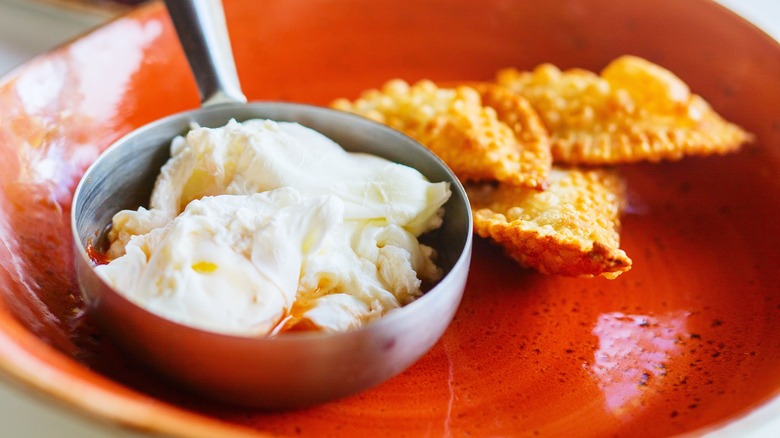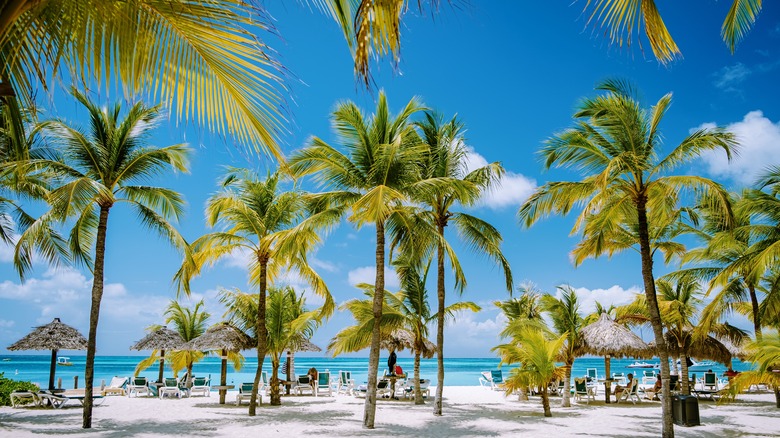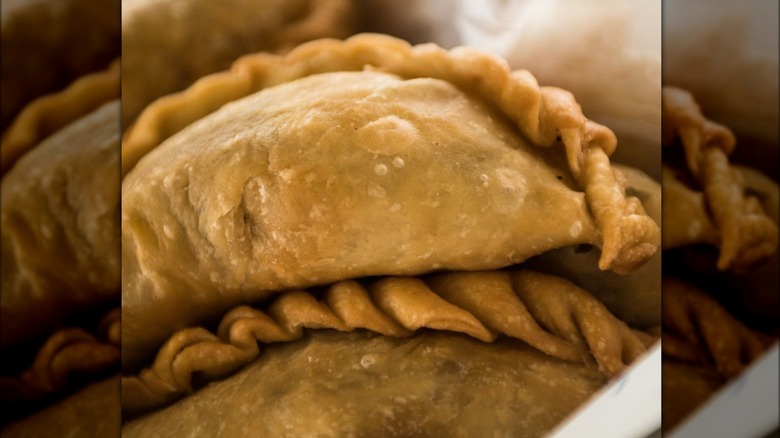Pastechis Are The Aruban Breakfast Staple You Need To Know About
Cooking provides more than mere sustenance or an intimate context for familial fellowship or a budding romance: It's also the cheapest way to travel around the world. If you're unable to physically visit the island country of Aruba in the south Caribbean Sea, you can at least have breakfast there by whipping up a batch of pastechis. These savory, crescent-shaped pastries are stuffed with cheese or ground beef (or tuna, chicken, or all manner of vegetables), enhanced by additions like sautéed mirepoix, raisins, fresh red chilies, and aromatic spices like cumin and nutmeg — all stuffed into a slightly sweet wheat flour dough and then fried to a golden brown. Although they're enjoyed any time of day or even as a between-meal snack, pastechis (along with a little fresh seafood) are thought of as the typical Aruban breakfast.
Pastechis bear a strong resemblance to South America's simple, hearty ground beef empanadas, with the biggest difference between the two being their doughs: Empanadas are (almost) universally made with cornmeal, a South American staple, while pastechis are essentially a stuffed shortcrust pastry, emblematic of their European roots (and not a million miles away from our favorite pie crust.) Different pastechi and empanada fillings are dependent on the region — and it's in this department that Aruba has a big advantage in culinary diversity if not geographic size.
Aruban cuisine is historically fusion
Colonized by both the Spanish and the Dutch (and still a self-governing member of the Kingdom of the Netherlands), and briefly in the hands of the British, Aruba has strong European roots — all of which find expression in its creole language (the Portuguese-based Papiamentu), as well as its culinary traditions. But that's just for starters: Indonesia was also colonized by the Dutch, and thus Aruba incorporates some of that cooking as well, including the use of Indonesian chili paste sambal oelek as a pastechi condiment in lieu of (or in addition to) the traditional ketchup and mustard.
Oh, but there's more: Aruba is proximal to Venezuela as well as other Leeward Antillean islands like Bonaire (where pastechis are also a favorite), and those influences — as well as popular local ingredients — all have their effect on an enormous variety of pastechi flavoring profiles. In nearby Curaçao, for example, pastechis are often filled with a spiced ground meat-and-cheese stuffing called keshi yena.
The pastechi variations
Apart from enjoying the abundant pleasures of eating fried enriched pastry dough, the real fun of making pastechis lies in the virtually endless types of stuffing: If you like cheese, consider using a semi-hard Dutch Edam or Marieke Gouda; for protein, you can take your pick from ground beef, chicken, turkey, or seafood; for the aromatic vegetable base, the Creole "Holy Trinity" of minced onion, celery, and green bell pepper appears most traditional; spice should come from fresh peppers like an aromatic, fiery Scotch Bonnet or Madame Jeanette; and some combination of fresh tomato, tomato paste, raisins, capers, pickles, or olives can provide a pleasing sweetness and piquancy. In lieu of salt, consider using Worcestershire or soy sauce. Honestly, the sky (and your imagination) are the limit here. Go big.
Once you've assembled your lovely half-moon-shaped pastries (which can range in size from party-sized snacks to palm-sized hand pies), they will be just as tasty baked or deep-fried. Once that's accomplished, you've just booked yourself a round-trip ticket to the Antilles.


